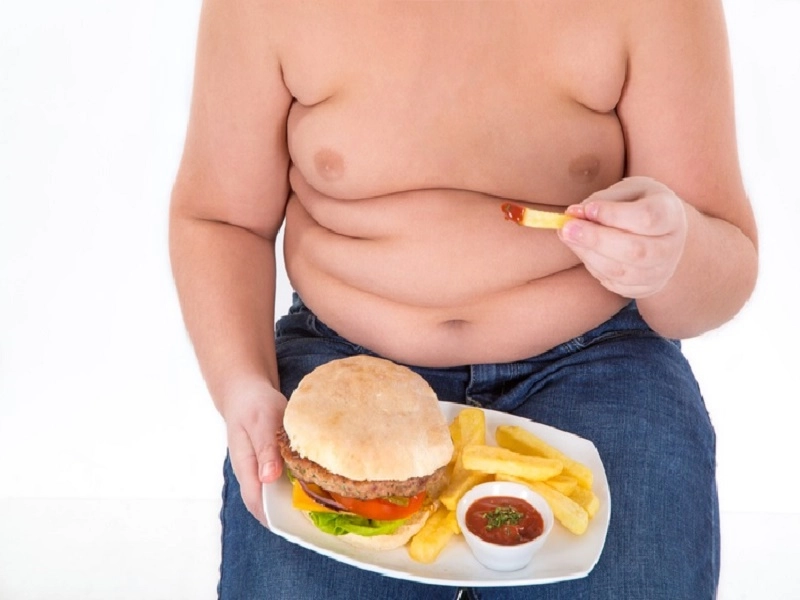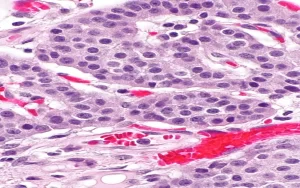Childhood obesity is a growing global epidemic that requires attention due to the burden it places on the health care system of children and adults. Consuming fatty foods and high sugar diet as well as smoking and not exercising are the main causes of obesity in children and adults. In the United States alone, 34% of children are obese. 39 million children under 5 in the world were overweight or obese in 2020.
Childhood obesity is associated with an increased risk of various diseases such as diabetes, cardiovascular disease, stroke, certain types of cancer at an older age, social problems and depression. In the past 30 years, obesity has more than doubled in children and tripled in adolescents worldwide.

Definition of obesity in children
Obesity is defined as having excess fat in the body and can be determined in children by BMI percentage using a growth chart. Children with a body mass index of 85% to 95% of their peers in the same gender are considered overweight, and those with a BMI of 95% or more compared to other peers in the same gender are considered obese.
Growth charts can be used to monitor a child’s growth over time. These charts are divided by percentiles, and by specifying the child’s height, weight, BMI, and age, one can find out which percentile the child’s BMI is in. Growth charts are provided by the Centers for Disease Control and Prevention and can be used to diagnose obesity in children.
Causes of obesity in children
Obesity occurs when the body receives more calories than it consumes. Childhood obesity is caused by eating too much food, drinking high-calorie sweet drinks, lack of exercise and physical activity, as well as genetic factors.
Body weight is regulated by various physiological mechanisms that maintain the balance between energy intake and energy expenditure. However, increasing energy intake in the long term can increase weight. For example, consuming an extra 120 kcal per day (like drinking a sugary drink) increases body mass by 50 kg over 10 years. Therefore, factors that can increase energy intake, or decrease energy consumption, cause obesity in the long run.
Genetic factors also have a significant impact on a person’s predisposition to obesity, but other behavioral and environmental factors definitely play a role in childhood obesity.
Symptoms and complications of obesity
Symptoms and complications of obesity include breathing disorders such as sleep apnea, chronic obstructive pulmonary disease and certain types of cancer such as prostate and colon in men, breast and uterine cancer in women, coronary heart disease, type 2 diabetes, depression, liver and gall bladder problems. , gastric reflux disease, high blood pressure, high cholesterol, stroke and joint diseases such as arthritis, knee and back pain. Obese children usually have more health problems than their peers. Obese children have large amounts of fat in the abdomen.

Prevention and treatment of obesity in children
Prevention and treatment of obesity in children is possible by consuming less food and increasing physical activity. However, you should consider that the weight loss diet for children is only prescribed by a nutritionist under certain conditions; For example, when the body mass index is too high or the child has health-related problems. In other cases, by using a suitable diet, the child’s weight is kept constant so that with the increase in height over time, the proportion of weight to height increases. Slimming diet in children is challenging due to the active growth of their organs and their need to store food for puberty, and if necessary, it should be done under the supervision of a pediatrician and a dietitian.
However, it is worth noting that dieting and weight loss programs are very difficult to stick to in the long term. Studies show that adults who lose weight using a diet plan regain about 50 percent of that weight loss within a year and all of it back within 5 years. Children’s intellectual and psychological immaturity compared to adults and their sensitivity to peer pressure create more practical problems for the successful treatment of obesity in children. Most efforts to reduce obesity in children use family- or school-based approaches, although drug and surgical treatments are also available.
Common questions about obesity in children
Is surgery recommended in childhood obesity?
Slimming surgery in children is recommended in very special circumstances. However, when obesity is very severe and associated with various complications, the doctor may recommend weight loss surgery as a treatment. But in general, the legal age for slimming surgery is 16 to 70 years.
How to talk about obesity with a child?
The right way to talk to children about obesity can influence their desire to maintain a healthy weight. Keep the conversation focused on maintaining a healthy lifestyle. You can consider the following points:
- Instead of using the words “fat,” use phrases like “overweight.”
- Do not compare the child with his peers and help him not to compare himself with others.
- Do not divide foods into good and bad, but use phrases like “healthy” and “healthier”.
- Don’t make bad comments about her body shape.
- Instead of setting weight loss goals, focus on steps toward a healthy lifestyle.
How to support children who are obese?
In addition to adhering to the above, it is necessary to cook healthy foods at home and offer them to the child to eat. Try to put salad and vegetables on the table with food and use fruits and dairy products daily. Don’t stop buying and using snacks, but minimize them. Also, exercise with the child and register him separately to participate in an exercise program.



